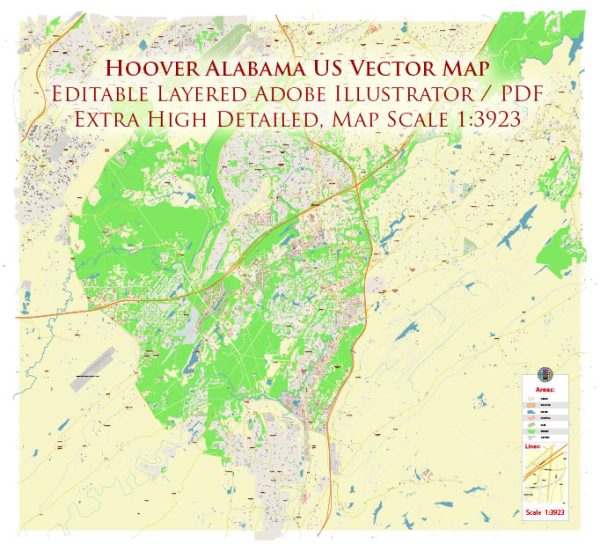Hoover, Alabama, is a city in the Birmingham metropolitan area. Please note that there might have been further developments since then.
Hoover’s history of urban development is intertwined with the broader context of the region’s growth and changes over time. Here’s a general overview:
- Early Settlement:
- The area that is now Hoover was initially sparsely populated, with rural communities and farmland.
- The early development of Hoover was influenced by its proximity to Birmingham, a city that grew rapidly during the late 19th and early 20th centuries due to the iron and steel industry.
- Suburban Growth:
- In the mid-20th century, there was a trend of suburbanization across the United States, and Hoover experienced a similar phenomenon.
- As Birmingham expanded, suburbs like Hoover attracted residents seeking a more suburban lifestyle while remaining close to urban amenities.
- Incorporation and Formation:
- Hoover officially became a city in 1967, separating from Jefferson County.
- The city’s incorporation marked a desire for local governance and the ability to control its own development.
- Commercial and Retail Expansion:
- Hoover has seen significant commercial and retail development, with the Riverchase Galleria being a prominent example. This large shopping mall, opened in 1986, has been a major economic and social hub.
- Residential Development:
- The city has experienced substantial residential growth, with a mix of single-family homes, apartment complexes, and planned communities.
- Economic Diversification:
- Over the years, Hoover has worked to diversify its economic base beyond residential and retail. Efforts have been made to attract businesses in various sectors.
- Education and Cultural Facilities:
- Hoover is known for its commitment to education, and the city has invested in educational facilities. The Hoover City School System is well-regarded.
- The Hoover Public Library and various cultural amenities contribute to the city’s quality of life.
- Infrastructure Development:
- Infrastructure development has been crucial for accommodating the growing population. This includes improvements in transportation, utilities, and public services.
- Community Services:
- Hoover has focused on providing a range of community services, including parks, recreational facilities, and public safety measures.
It’s important to check more recent sources for the latest information on Hoover’s urban development, as there may have been new projects, changes, or developments since my last update.


 Author: Kirill Shrayber, Ph.D.
Author: Kirill Shrayber, Ph.D.